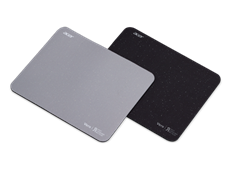Ergonomics plays a crucial role in the design of computer mice. An ergonomic mouse is one that is designed to be comfortable and efficient, reducing the risk of repetitive strain injuries (RSIs) and improving overall user comfort during prolonged computer use.
Key Elements of Ergonomic Mouse Design:
- Shape: Ergonomic mice are typically designed to fit the natural contours of the hand. They come in various shapes, including ergonomic, vertical, and trackball designs, to accommodate different grip styles.
- Button Placement: The placement of buttons on an ergonomic mouse is carefully considered to minimize strain on the fingers and wrist. Programmable buttons can further enhance efficiency by reducing the need to reach for the keyboard.
- Materials: High-quality, non-slip materials are used in ergonomic mouse construction to ensure a secure grip and reduce the risk of accidental drops.
- Weight: The weight of the mouse is balanced to reduce wrist fatigue during extended use.
Using an ergonomic mouse can significantly reduce the risk of developing conditions like carpal tunnel syndrome and tendinitis. It can also enhance overall comfort, allowing users to work or play for longer periods without discomfort.
When choosing an ergonomic mouse, it’s essential to consider your hand size, grip style, and the tasks you perform regularly. Trying out different models and consulting ergonomic guidelines can help you find the perfect mouse that promotes both comfort and productivity.
In conclusion, ergonomic design is a critical consideration in the development of computer mice. Choosing an ergonomic mouse tailored to your needs can lead to a more comfortable and productive computing experience while protecting your long-term hand and wrist health.






